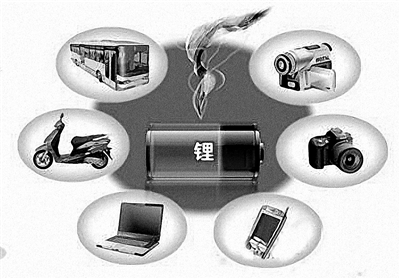Why Lithium Batteries Become Nobel Prize Achievements

When you browse the latest news of the Nobel Prize with your mobile terminal, do you think of the power supplier of your mobile terminal — — Lithium battery is the result of this year’s Nobel Prize!
On the afternoon of October 9th, Beijing time, the Royal Swedish Academy of Sciences announced that it would award the 2019 Nobel Prize in Chemistry to Professor John Goodenough, Professor Stanley Wittingham and Dr. Yoshinoya for their outstanding contributions in the field of lithium batteries.
How can lithium batteries, which are widely used in people’s daily lives, become Nobel Prize achievements? This has to start with the study of "batteries replacing oil".
In 1973, the fourth Middle East War caused the first oil crisis. The developed countries such as the United States realized the importance of getting rid of oil dependence and began to invest in battery research — — Battery can not only replace oil as a new energy source for automobiles, but also be an energy storage device for renewable energy such as solar energy and wind energy. Therefore, the enthusiasm of countries to develop this kind of battery is unprecedented.
The first breakthrough was Stanley Whitingham. He drafted the initial design scheme of lithium battery: titanium sulfide as cathode material and lithium metal as cathode material — — This proved to be a rechargeable battery. The energy density problem of battery materials, which has puzzled scientists for more than one hundred years, has also been solved by Wittingham one by one.
However, with the passage of time, it has been found that it is not safe to use metallic lithium as the negative electrode. The lithium battery will continuously precipitate dendrites with the increase of usage times, which will eventually cause the battery to spontaneously ignite.
Is there a solution to this problem? Professor Goodenough, who is 97 years old and the oldest winner in the history of the Nobel Prize, has made great contributions.
In 1980, Goodenough team proposed and found layered oxide cathode material — — Lithium cobalt oxide, which is still used in all kinds of mainstream consumer electronic products, and the negative electrode of lithium aluminum alloy, has brought mankind into the era of portable mobile phones and notebook computers.
In 1997, 75-year-old Goodenough and his team developed another more stable and safe cathode material, Ferrous lithium phosphate. It is the mainstream material for batteries used in electric vehicles, electric buses, electric ships, large-scale energy storage, communication base stations, data centers and so on.
Only a wider application can promote the further development of lithium batteries. How to integrate the experimental battery materials into usable devices and really apply them to small objects? Japanese scientist Akira Yoshino did it.
In 1990, after 10 years’ research, Akira Yoshino, then a researcher in a company, successfully used carbon instead of lithium alloy as the negative electrode of the battery. Combined with the lithium cobaltate positive electrode of Goodenough, this battery became safer and greatly reduced the risk of spontaneous combustion.
According to Yoshino Akira’s research, Sony officially launched the world’s first commercial lithium battery in 1991. Subsequently, they replaced the carbon cathode with graphene, which further improved the safety, energy density and cycle life of the battery.
Compared with lead-acid battery and nickel-silicon battery, lithium battery has the advantages of high energy density, long life and no memory effect, and is an excellent battery.
Back then, the invention of electric vehicles was much earlier than that of internal combustion engines. However, with the continuous improvement of internal combustion engine efficiency, the battery energy density is not high enough, which makes electric vehicles fade out. Now, electric vehicles have returned to people’s field of vision. An important premise is that lithium batteries, which were originally used to replace oil, have finally assumed an important historical mission.
At present, the global lithium battery industry is close to 50 billion dollars, and it is growing at a rate of more than 10% every year. Lithium battery has penetrated into all aspects of human life, and its invention has supported the continuous development of high technology in human society.
Obviously, lithium batteries have become the result of the Nobel Prize, and they deserve it!